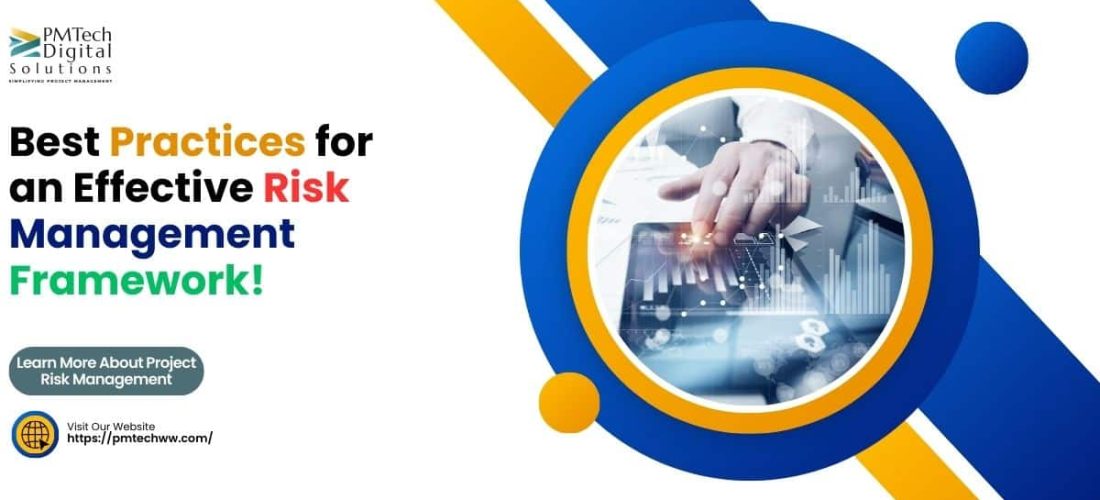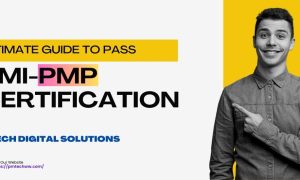A Risk Management Framework (RMF) helps organizations identify, assess, and manage risks effectively. Risk management framework implementation is critical for protecting assets and ensuring business resilience. This article will cover the core components, implementation steps, and major benefits of an RMF.
Key Takeaways
A Risk Management Framework (RMF) is essential for organizations to balance taking calculated risks and reducing them effectively, ensuring financial stability and adaptability.
Key components of an RMF include risk identification, assessment, mitigation, reporting, and governance, all of which form a holistic defense against business risks.
Implementing an RMF involves categorizing information systems, selecting and implementing security controls, assessing and authorizing these controls, and maintaining continuous monitoring and improvement.
Risk management framework implementation is crucial for ensuring financial stability and adaptability.
Introduction
Imagine standing on the precipice of a towering mountain; the air is crisp, the view breathtaking. This is the vantage point from which organizations must view the vast landscape of risks that lie ahead. A Risk Management Framework (RMF) is the compass that guides businesses through the treacherous terrain of uncertainties. An RMF, which the National Institute of Standards and Technology (NIST) originally created, is now a crucial component of any forward-thinking organization’s toolkit, assisting in navigating the constantly changing risk environment that businesses around the world, including those required for the IT systems used by the US government, face. Effective risk management framework implementation is crucial for successfully navigating this complex risk landscape.
The true value of an RMF lies in its ability to:
Strike a delicate balance between taking calculated risks and effectively reducing them
Protect an organization’s capital base and earnings
Add intrinsic value, attracting investors and bolstering the company’s financial stability and performance
Ensure continued success and adaptability in an unpredictable world
By integrating the main components of an RMF, organizations can become an integral part of an elite group that stands resilient in the face of adversity.
Understanding Risk Management Framework (RMF)

Delving into an RMF is akin to decoding a map to treasure; the treasure, in this case, being financial stability and superior organizational performance. At its core, an RMF is fashioned to manage risks by systematically understanding and protecting assets, which is the cornerstone of effective risk management. This is particularly vital in today’s business environment, where the risk landscape is as dynamic as it is daunting. Implementing a risk management framework is crucial for risk management framework implementation in achieving financial stability and superior organizational performance.
An RMF is not just about adhering to guidelines; it’s about ingraining a culture of risk awareness and preparedness within the fabric of an organization. From the NIST Risk Management Framework to comprehensive risk management frameworks adopted by businesses worldwide, the goal remains the same: to manage risks effectively through a holistic approach that includes:
risk governance
assessment
mitigation
regular review of risk management processes.
Key Components of a Comprehensive Risk Management Framework
Envision an effective RMF as a formidable fortress that safeguards an organization. It is constructed with robust bastions, each representing a key component of comprehensive risk management:
Risk identification
Risk assessment
Risk mitigation
Risk reporting
Risk governance
Risk management framework implementation is crucial in constructing a robust defense mechanism against business risks. Together, these components form a holistic defense mechanism against the multifaceted risks involved in conducting business, even when dealing with federal agencies.
Risk Identification
In the quest to fortify the fortress, the first line of defense is risk identification. It’s the process of proactively scanning the horizon for potential threats, much like sentinels keeping watch. Defining the risk universe, which includes a myriad of risks such as IT, operational, and credit risk, is the initial step toward understanding what dangers lurk and how they may impact the organization. Risk management framework implementation plays a crucial role in this process, ensuring a structured approach to identifying and assessing risks.
It is a meticulous process that involves not just listing potential risks but dissecting each one to understand its root causes and potential consequences. By creating detailed risk statements and conducting rigorous internal and external cross-checks, organizations can prioritize threats based on their potential impact, setting the stage for robust risk management.

Risk Assessment & Measurement
Once the risks have been identified, the next step is akin to strategizing in a war room: risk assessment and risk measurement. This is where the likelihood of risks and their potential impacts are evaluated, using various measurement techniques such as value at risk (VaR) and earnings at risk (EaR). It’s a process that demands a convergence of minds, utilizing brainstorming and SWOT analysis to carefully weigh each risk against the organization’s capacity to bear it. In this context, risk assessments play a crucial role in determining the best course of action. Additionally, the implementation of a risk management framework is essential to ensure a structured and comprehensive approach to risk assessment and measurement, including risk management framework implementation.
The ultimate goal of risk assessment is to:
Rank and prioritize risks
Allocate resources efficiently
Respond promptly to mitigate and resolve emergent risks
By understanding and prioritizing risks, organizations can make informed decisions, thus empowering them to navigate the choppy waters of uncertainty with confidence.
Risk Mitigation Strategies
With the enemy’s strategy laid bare, the organization can now deploy its risk mitigation strategies. Like deploying shields and weapons on the battlefield, these strategies are designed to minimize or eliminate identified risks. Diversification, insurance, and financial derivatives are but a few of the tools in the arsenal that organizations can use to protect themselves from the financial fallout of potential threats. Implementing a risk management framework is crucial in deploying these effective risk mitigation strategies. Risk management framework implementation ensures that these strategies are systematically and effectively integrated into the organization’s operations.
However, wielding these tools effectively requires a comprehensive Plan of Action and Milestones (POA&M) and clear security and operational standards to reduce the danger of data exposure and improve risk mitigation measures. These standards ensure that risk management is not left to chance but is a calculated, proactive strategy that fortifies the organization’s defenses.
Risk Reporting & Monitoring
The integrity of any fortress relies on its ability to detect breaches and weaknesses; this is where risk reporting and monitoring come into play. Regular updates and continuous monitoring are essential for maintaining optimal risk levels and ensuring that security measures are functioning as intended. It’s a continuous vigil, leveraging real-time information streams and automation to enhance the quality and speed of risk reporting. Implementing a risk management framework is crucial in this process, and risk management framework implementation ensures that all aspects of risk are systematically addressed.
Financial institutions exemplify this approach by producing daily risk reports. Similarly, robust risk management frameworks encourage the use of tools like information systems audits and impact analysis to continuously monitor and adjust to emerging threats, ensuring the organization remains secure and compliant.
Risk Governance
The final cornerstone of a comprehensive RMF is risk governance. This is not merely about setting rules but about establishing a system of accountability that aligns with organizational policies. It’s about:
Codifying the risk management process
Defining employee roles
Segregating duties
Assigning authority
Risk management framework implementation plays a crucial role in establishing effective risk governance. This ensures that every member of the organization plays their part in managing risks.
Risk governance also involves monitoring core risks, managing exceptions to set risk limits, and categorizing risks into core and non-core, thus providing a structured framework that empowers employees to adhere to the RMF and manage risks effectively.
Steps to Implementing a Risk Management Framework
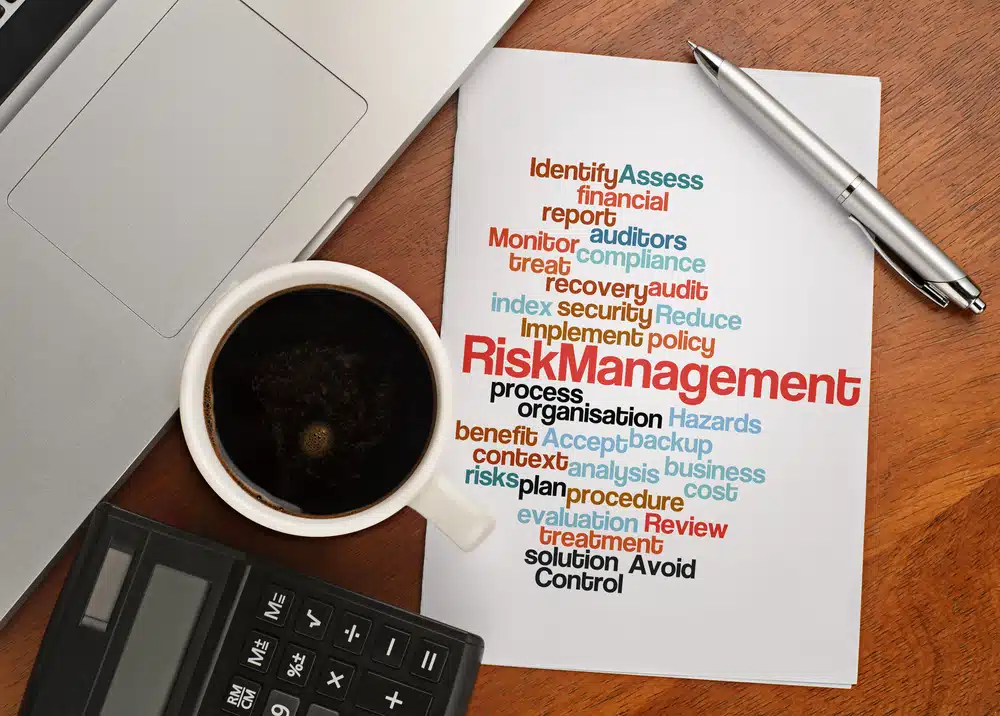
Constructing this fortress, however, is not an overnight affair. It necessitates a methodical, phased approach, beginning with the recently added preparation step that NIST emphasizes and underlines the significance of early planning and laying a solid foundation for the RMF. Risk management framework implementation is crucial in achieving this systematic and phased approach.
Implementing an RMF is a sequential process, involving:
Categorization of systems
Selection and implementation of security controls
Assessment and authorization of these controls
Continuous monitoring and improvement to adapt to the ever-changing threat landscape.
Categorize Information Systems
The first tactical move in the implementation process, including the system development life cycle, is to categorize information systems. By evaluating the worst-case scenarios for the organization’s mission, assets, and legal responsibilities, companies can determine the appropriate levels of security required for each information system. The categorization is based on the potential impact on confidentiality, integrity, and availability, with each rated as low, moderate, or high, using NIST standards such as FIPS Publication 199 and SP 800-60. Risk management framework implementation plays a crucial role in this categorization process.
By assigning an overall security impact value for each information type, organizations can ensure that they maintain a well-equipped information security posture tailored to the specific needs of their various information systems.
Select & Implement Security Controls
Next, organizations select and tailor security controls to fit the categorized risks, following guidelines set forth in NIST Special Publication 800-53. Security controls are the mechanisms and procedures that protect the integrity, confidentiality, and availability of information and include a mix of common controls, system-specific controls, and hybrid controls.
These selected controls are designed to be consistent and repeatable, creating a robust framework that can withstand the pressures of various risks. By implementing these tailored security controls, organizations can ensure comprehensive risk mitigation, preserving the integrity of their information systems. The importance of risk management framework implementation cannot be overstated, as it is crucial in selecting and implementing effective security controls.
Assess & Authorize Security Controls
Once the security controls are in place, they must be rigorously assessed to ensure they are effective in mitigating risks to operations and data. This is carried out by a designated assessor or team, tasked with reviewing the system and confirming that the controls are correctly implemented and functioning as intended.
Following a successful assessment, the security controls can be authorized, granting the information systems a seal of approval and a green light for operation within the organization. This step is crucial for limiting risks and maintaining the integrity and security of the organization’s data. The role of risk management framework implementation is essential in assessing and authorizing these security controls.
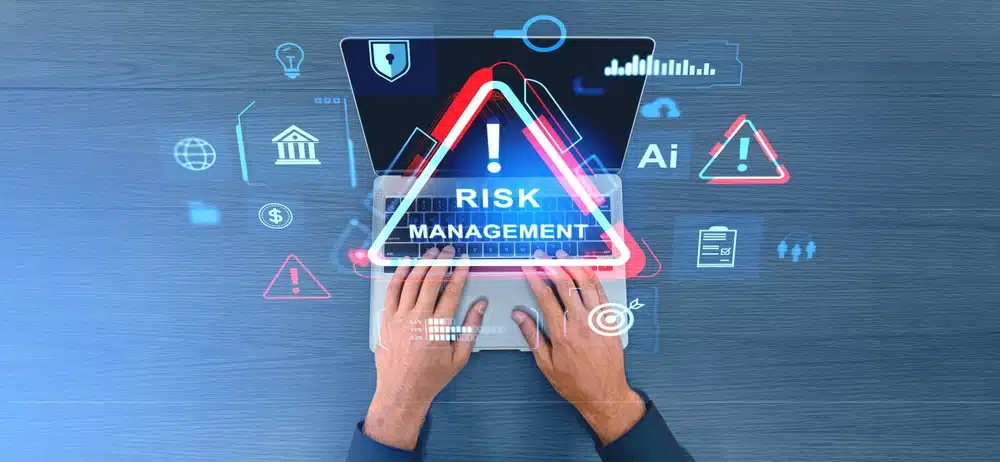
Continuous Monitoring and Improvement
The task of sustaining the fortress is continuous and ever-evolving. This is where continuous monitoring and improvement come into play—ensuring that the security controls remain effective and are adapted to respond to new threats. Automation tools, such as those provided by Varonis, play a critical role in this process, offering real-time or near-real-time data to aid in decision-making. Implementing a risk management framework is essential for continuous monitoring and improvement, as it helps identify and mitigate potential risks effectively.
Varonis, in particular, is adept at:
This proactive stance on continuous monitoring allows organizations to stay ahead of the curve, maintaining a robust security posture.
Benefits of an Effective Risk Management Framework
As the ramparts of an RMF rise, they reveal the panorama of benefits that it brings to an organization. From ensuring continued success and resilience to helping protect an organization’s capital and earnings, a robust RMF is a beacon of stability in a turbulent world. The risk management framework implementation is crucial in ensuring continued success and resilience.
It not only provides full-spectrum protection against cyber risks but also enhances trust and business relationships with clients and customers.
Asset Protection
In the realm of asset protection, an RMF serves as a guardian, prioritizing the understanding and protection of both data and physical assets. By identifying potential risks, organizations can implement strategies and security controls to safeguard their most valuable assets from threats.
This protection is not limited to tangible assets alone but extends to the intangible yet critical data that drives business operations. An RMF ensures that information security is not left to chance but is a calculated, proactive measure to secure the organization’s valuable data and maintain its integrity. Implementing a risk management framework is crucial in protecting both data and physical assets, ensuring comprehensive security measures are in place through risk management framework implementation.
Reputation Management
An organization’s reputation is its most precious commodity, and an RMF is a robust shield that protects it. By implementing a well-structured RMF, companies can limit the consequences of cyber attacks and other risks that could lead to reputational damage. Risk management framework implementation plays a crucial role in limiting these consequences.
Moreover, an RMF enables companies to swiftly analyze control gaps and develop strategies to mitigate reputational risks. This proactive approach to reputation management ensures that organizations are well-equipped to maintain their standing in the eyes of stakeholders and the public at large.
Intellectual Property Protection
Intellectual property is the lifeblood of innovation within many companies, and its protection is paramount. An RMF provides the framework for guarding against the theft and misuse of this vital asset. Implementing a risk management framework is crucial in protecting intellectual property, and risk management framework implementation ensures comprehensive security measures are in place.
By establishing guidelines for the protection of intellectual property, an RMF helps organizations avoid losses related to competitive advantage, business opportunities, and legal risks. This ensures that the fruits of innovation remain secure and continue to provide the company with a strategic edge.
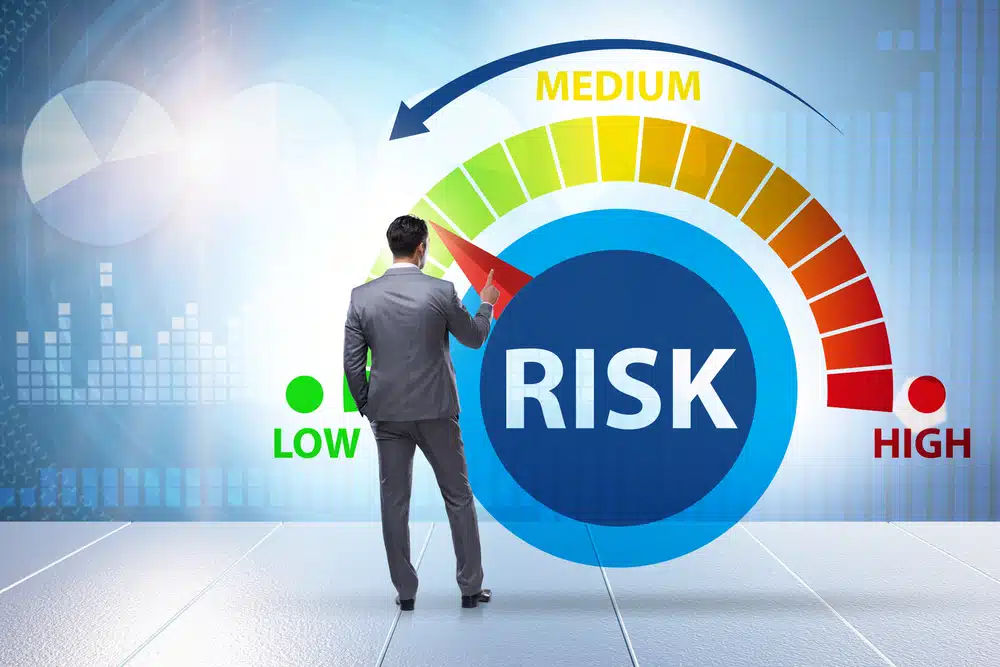
Competitive Advantage
In today’s competitive business landscape, an RMF is a strategic asset that provides organizations with valuable market insights and the agility to respond quickly to competitors’ actions. By analyzing information streams about competitors from disparate outside sources such as social media and news reports, an RMF enables organizations to stay one step ahead. Risk management framework implementation plays a crucial role in providing these valuable market insights and agility.
This strategic edge is not just about reacting to competitors but also about proactively managing risks to seize new opportunities and safeguard against potential losses. An RMF is a critical tool for organizations looking to maintain and enhance their competitive positioning in the marketplace.
How Varonis Can Assist with RMF Compliance
Amidst the complexity of RMF compliance, Varonis emerges as a beacon of simplicity and efficiency. Varonis’ Data Security Platform automates many RMF recommendations and requirements, making it a vital ally for organizations striving to achieve and maintain RMF compliance. Additionally, Varonis simplifies risk management framework implementation, ensuring a smoother compliance journey.
With tools like:
DatAdvantage
Data Classification Engine
DataPrivilege
Automation Engine
Varonis identifies sensitive data and maps permissions, while DataPrivilege streamlines the often onerous task of permissions and access management. In support of the least-privilege model required by NIST SP 800-137, the Automation Engine even takes on the tedious task of removing global access groups.
Summary
In conclusion, the implementation of an effective risk management framework is not just a business necessity; it is a strategic imperative that empowers organizations to navigate the complexities of today’s risk environment. The RMF stands as a testament to an organization’s commitment to resilience, adaptability, and strategic foresight. It is the cornerstone upon which organizations can build a future that not only anticipates change but embraces it, turning potential risks into opportunities for growth and innovation. The role of risk management framework implementation is crucial in empowering organizations to navigate the complexities of today’s risk environment.
Frequently Asked Questions
What are the main components of a Risk Management Framework?
The main components of a Risk Management Framework are risk identification, assessment, mitigation strategies, reporting, and monitoring, as well as governance. These elements collectively form a comprehensive approach to managing organizational risks, leading to effective risk management framework implementation.
How does an RMF contribute to an organization's competitive advantage?
Implementing an RMF enables organizations to gain valuable market insights, respond strategically to competitor actions, and effectively manage risks, ultimately contributing to a competitive advantage in the market through risk management framework implementation.
Why is continuous monitoring important in an RMF?
Continuous monitoring is important in an RMF because it ensures that security controls remain effective and are adjusted in response to emerging threats, helping to maintain a strong security posture and compliance with policies on an ongoing basis, and supporting risk management framework implementation.
Can the implementation of an RMF protect against reputational damage?
Yes, implementing a robust RMF can help organizations limit the consequences of cyber attacks and other risks that could lead to reputational damage, by quickly analyzing gaps in controls and developing plans to mitigate reputational risks through risk management framework implementation.
How can Varonis assist with RMF compliance?
Varonis can assist with RMF compliance by automating RMF recommendations and requirements, streamlining permissions and access management, and supporting the least-privilege model. Its tools help identify sensitive data, map permissions, and automate the removal of excessive access, aiding in maintaining RMF compliance and risk management framework implementation.

